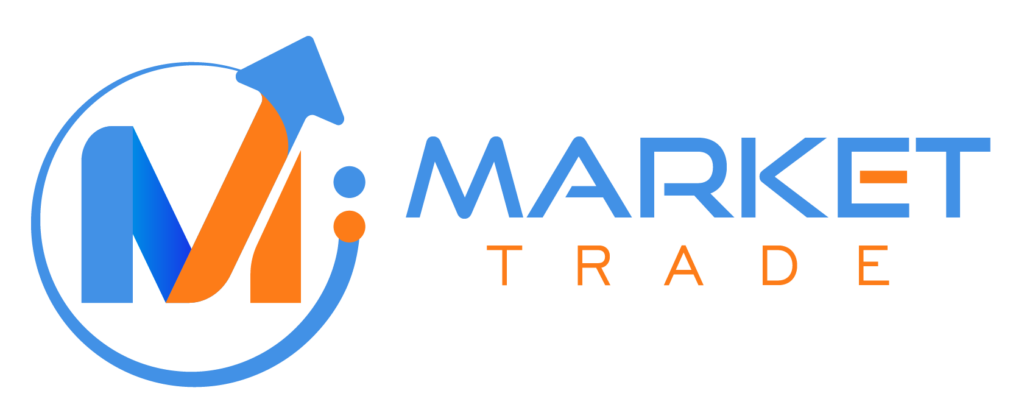Gold and silver have always been among the most sought-after assets in the global financial markets. Whether it’s for hedging inflation, portfolio diversification, or speculative opportunities, these precious metals hold a significant position in trading. One of the most popular platforms for trading these metals is COMEX, a part of the CME Group.
In this detailed guide, we will break down everything you need to know about Comex trade, how to start trading gold and silver futures, and what role platforms like Markettrade play in helping you access the global commodities market.
What is Comex Trade?
Comex trade refers to trading on the Commodity Exchange (COMEX), which is a division of the CME Group, the world’s largest derivatives marketplace. COMEX specializes in precious metals futures and options, including gold, silver, platinum, and palladium. By trading futures contracts on COMEX, traders can speculate on the price movement of these metals or hedge against price risks.
For instance, if you think the price of gold will rise in the future, you can buy a gold futures contract on COMEX. Conversely, if you expect the price to drop, you can sell a contract and potentially profit from the decline. This form of commodity market trading provides opportunities for both short-term traders and long-term investors.
Why Trade Gold and Silver Futures?
Gold and silver are economic indicators. Here’s why trading them via COMEX is so popular:
- Liquidity: COMEX is one of the most liquid markets in the world, ensuring smooth order execution and minimal slippage.
- Price Transparency: Prices on COMEX are considered benchmarks globally, influencing spot markets everywhere.
- Leverage: Futures trading allows traders to control large contract sizes with relatively small capital (margin).
- Hedging Tool: Gold and silver futures are widely used by producers, refiners, and financial institutions to hedge against price volatility.
Steps to Start Comex Trade in Gold and Silver Futures
Trading on COMEX might sound intimidating, but breaking it down into steps makes it manageable:
1. Understand the Basics of Futures Contracts
Before placing your first trade, you need to understand what a futures contract is. A futures contract is a standardized agreement to buy or sell a specific quantity of a commodity (like gold or silver) at a predetermined price on a future date. COMEX contracts have set sizes, for example:
- Gold Futures: Standard contract size is 100 troy ounces.
- Silver Futures: Standard contract size is 5,000 troy ounces.
2. Learn About Margin Requirements
Unlike stocks, futures trading requires margin deposits. This is a small percentage of the contract’s total value, which acts as collateral. Margins amplify both potential profits and losses, making risk management crucial in commodity market trading.
3. Choose a Reliable Broker
To trade on COMEX, you need a brokerage account with access to futures markets. Look for brokers offering:
- Direct market access to CME Group.
- Advanced trading platforms with real-time data.
- Reasonable commission and margin rates.
4. Analyze the Market
Successful Comex trade requires strong market analysis. Two main approaches are:
- Technical Analysis: Using charts, patterns, and indicators like moving averages or RSI.
- Fundamental Analysis: Studying economic indicators, central bank policies, inflation data, and geopolitical events affecting gold and silver prices.
5. Place Your Trade
Once you have a strategy, it’s time to place your trade. You can:
- Go Long (Buy): If you expect prices to rise.
- Go Short (Sell): If you expect prices to fall.
Set stop-loss and take-profit levels to manage risk.
6. Monitor and Manage Your Position
Futures markets move fast, so keep an eye on your positions. Use trailing stops or adjust positions as new information becomes available.
How Does the MCX Commodity Market Differ from COMEX?
While COMEX dominates globally, the MCX commodity market (Multi Commodity Exchange) serves as India’s primary commodity futures exchange. Here’s how they differ:
- MCX deals primarily in Indian rupees, while COMEX operates in US dollars.
- Contract Sizes: MCX offers smaller contract sizes compared to COMEX, making it more accessible for retail traders.
- Regulations: MCX is regulated by SEBI in India, whereas COMEX operates under US regulations.
Both platforms allow you to trade in gold and silver futures, but COMEX offers international exposure, while MCX caters to the Indian market.
Benefits of Comex Trade for Gold and Silver
- Global Pricing Influence: COMEX prices act as benchmarks for gold and silver globally.
- Diversification: Adding metals to your portfolio reduces dependence on equities and currencies.
- Arbitrage Opportunities: Traders often exploit price differences between COMEX and MCX commodity markets.
- Risk Management: Hedging tools help businesses protect themselves against adverse price movements.
Risks Involved in Comex Trade
While the opportunities are attractive, there are risks you need to be aware of:
- High Volatility: Precious metal prices can swing dramatically based on global events.
- Leverage Risk: While leverage amplifies gains, it can magnify losses too.
- Margin Calls: If the market moves against you, your broker might ask for additional funds to maintain your position.
- Regulatory and Market Risks: Global economic changes or unexpected geopolitical developments can affect prices.
To mitigate these risks, always have a well-defined strategy, use stop-loss orders, and never risk more capital than you can afford to lose.
Tips for Successful Commodity Market Trading on COMEX
- Stay Updated: Follow economic news, Federal Reserve announcements, and geopolitical developments.
- Use Risk Management Tools: Stop-loss and take-profit orders are non-negotiable.
- Start Small: Begin with micro contracts to gain experience without risking too much.
- Continuous Learning: Commodity markets evolve; keep upgrading your skills and knowledge.
The Role of Markettrade in Commodity Futures
Platforms like Markettrade have made it easier for traders to access global markets like COMEX. With advanced tools, real-time charts, and educational resources, Markettrade provides a user-friendly gateway for beginners and professionals to engage in Comex trade and other commodity market trading activities. Their technology simplifies complex processes, ensuring seamless execution and better control over positions.
Final Thoughts
Trading gold and silver futures on COMEX offers incredible opportunities for investors and traders alike. From hedging against inflation to capitalizing on price volatility, Comex trade opens doors to one of the most liquid and transparent markets in the world. However, it’s essential to understand the risks, practice disciplined trading, and leverage platforms like Markettrade to gain an edge in the competitive world of commodity market trading.
Whether you’re exploring COMEX for international exposure or comparing it with the MCX commodity market, the key is to stay informed, start small, and grow strategically.



